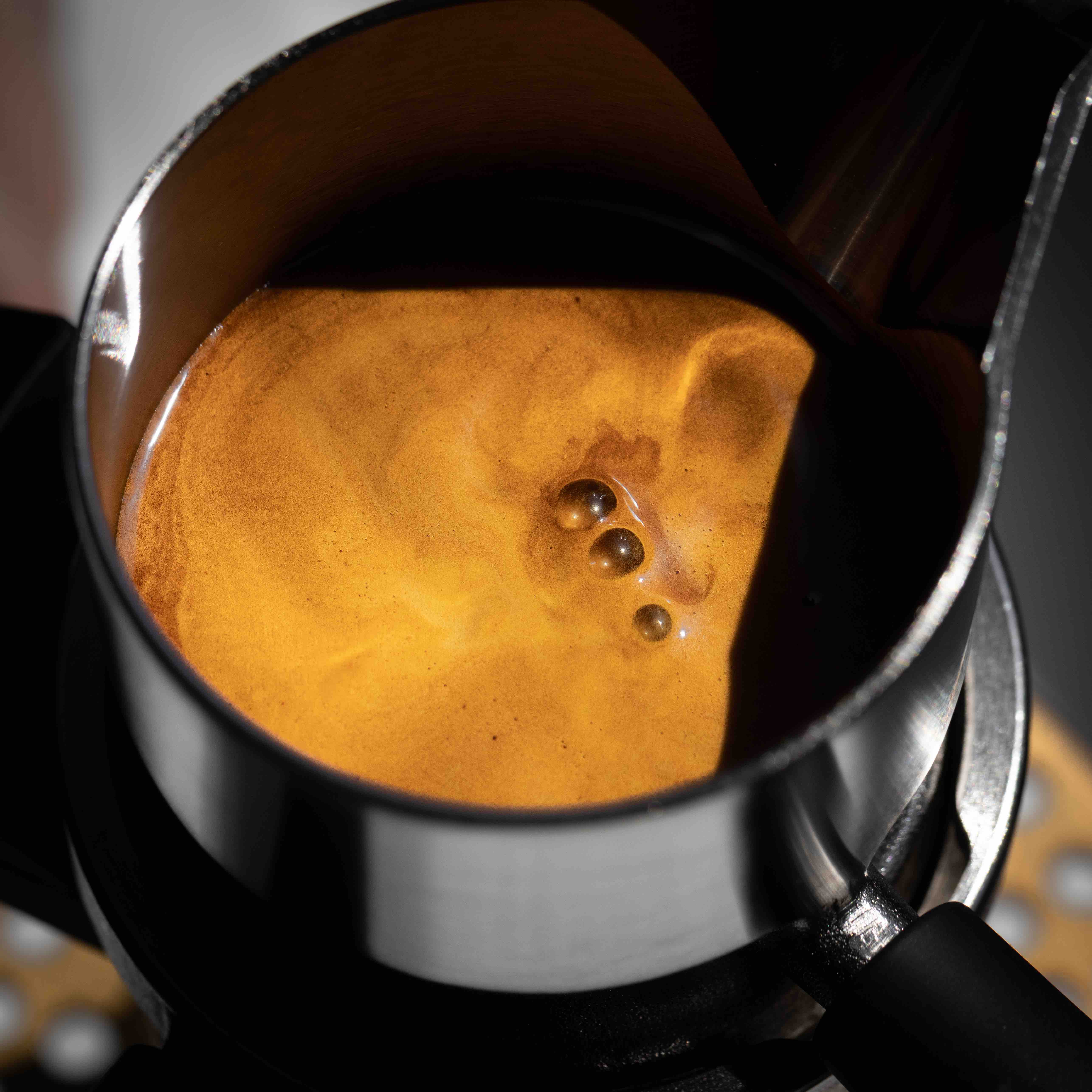Looking for help?
Find answers to your questions
Making delicious espresso with your 9Barista
Although 9Barista is a simple machine to use, there are a few things which need to be done carefully in order to produce those stunningly rich and creamy shots with well-balanced flavours.
In this post we’ll explain which tools you’ll need, which beans to choose, and what technique to apply to bring it all together and start making delicious espresso with your 9Barista.

Tools
The tools below will enable you to get the best out of your machine.
A good quality burr grinder
When it comes to getting the most out of your beans, the quality of your grinder is just as important as the quality of your espresso machine. The reason for this is that the grinder provides control over the extent to which the various soluble elements in the grounds are extracted, which ultimately determines the taste and texture of the shot. Good quality grinders are accurate and repeatable in how they grind the beans.
Burr grinders deliver the best results, and there are two types; conical and flat. Both can deliver great results for espresso. Blade grinders are too uncontrollable – so don’t bother with those. As a guide, the price point for a good quality burr grinder suitable for espresso is around £100 (~$140) and upwards. We’ve put together a list grinders which we’ve used with 9Barista and can confirm are up to the job – here it is.
A set of scales
Homing in on the perfect espresso extraction requires repeatability combined with fine adjustments to the parameters. A set of scales with a 0.1g resolution (like these from Timemore) will help you use a consistent amount of ground coffee each time.
Coffee Beans
For the best results your beans need to be freshly roasted and ground just before you use them. Ideally you want your beans to have been roasted within the month. Supermarket bought pre-ground coffee won’t produce impressive results. A good method is to get your beans posted directly from a coffee roasting company, so you always get a fresh batch. You can then keep your beans in the freezer to keep them fresher for longer.
Technique
Now that you have your burr grinder ready, and your freshly roasted beans waiting for you in the freezer, the next step is to grind the coffee and prepare it in the basket. The main objective here is to produce a bed of ground coffee in the basket which provides an even and uniform flow resistance to the hot water that will flow through it. By having a uniform flow resistance you ensure that the water flows through the ground coffee evenly, giving all the granules of coffee an equal chance to impart their flavour into your espresso. Getting this right will help you produce a shot with well balanced flavours, and high levels of extraction.
To get a uniform bed of coffee, evenly distribute the ground coffee in the basket before you tamp, by giving the portafilter a shake side to side, or by sliding your palm over the top of the basket. We suggest starting with 18-20g of ground coffee. Then when you tamp, carefully keep the tamper horizontal, while you apply a clean firm push downwards. Push until grinds stop compressing – around 5kg of force is enough. Keeping it level is the key thing here, the tamping force is less important.

Now gently put the basket cap into the basket, being careful not to disturb your beautifully even bed of grinds, and run a cycle on the machine. Time how long it takes for all the espresso to fill the portafilter cup – we’re aiming for it to take 25 to 30 seconds.
If your coffee is ground to coarse, it won’t offer much flow resistance to the water passing through it. As a result not much pressure will build up in the grouphead, and all the water will pass though the coffee in about 5 to 10 seconds. This results in low levels of extraction, and often a slightly sour and watery shot, lacking in viscosity.
When the coffee is ground sufficiently fine, the full 9 bar of pressure will build up in the group head, and the longer extraction time of 25 to 30 seconds will be reached. The higher pressures will increase the viscosity of the shot and will produce more crema, and the longer brew time will allow higher levels of extraction to occur, giving a good balance of flavours
Grinding the coffee even finer will further increase the flow resistance, giving even longer extraction times of 30 to 40 seconds. If it goes too far, slightly bitter and burned ash flavours can start to develop, and your coffee will be over extracted.
Each coffee is different, so trust your taste buds. If things are a bit sour, try grinding a little finer to slow down the flow rate and increase the extraction. You can also try using a bit less coffee in the basket to increase the levels of extraction.


